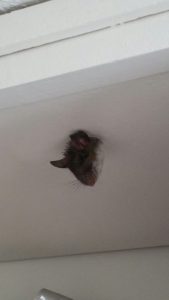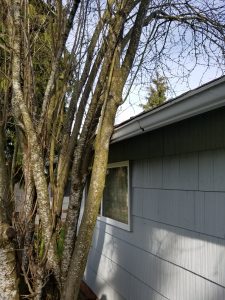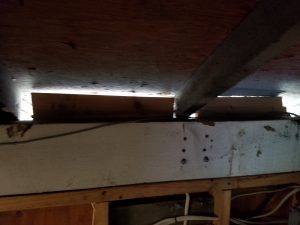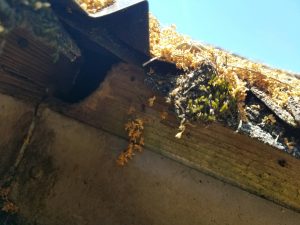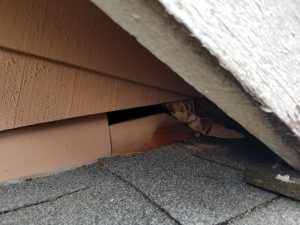Do exterminators get rid of rats?
Seattle Commercial Businesses Abatement, Baiting, Trapping, Removal Service exterminators
Exterminator-Seattle-Bellevue-Kirkland-Redmond-Issaquah-Sammamish Kent-Renton WA King County rodent control services include repairs removal of mouse mice rats squirrels to prevent re-infestation of rodents around your home or commercial business buildings as part of the rat control program to eliminate rats mice before they can re-establish.
Rat Abatement Program To New Construction
King County Rat Abatement Guide: Comprehensive Solutions for Demolition Projects
Understanding the complexities of rat abatement in King County, Washington, is essential for smooth demolition processes. Here’s an extensive overview of our services and what you need to know:
Detailed Process: Our rat abatement service spans 2 to 3 visits, tailored to fit your project’s timeline. We start with a meticulous inspection to assess the situation and strategically place traps and baits. Essential paperwork is provided to facilitate your demolition permit process, ensuring full compliance with King County regulations. After confirming trap effectiveness, we digitally issue your Rat Abatement Certification, a critical document required for the ground disturbance inspection. Post-demolition, we promptly retrieve all equipment to complete the process seamlessly.
Flexibility with Demolition Dates: Whether your demolition date is fixed or tentative, we accommodate both scenarios. Beginning abatement with an estimated date ensures preparedness regardless of any schedule changes.
County Compliance Requirements: King County mandates two essential documents:
- Rat Abatement Declaration: This document confirms your commitment to following all abatement protocols and is necessary for obtaining your demolition permit.
- Rat Abatement Certification: Issued digitally upon meeting county standards and completing payment. This certification is crucial during inspections to demonstrate compliance with regulatory standards.
Managing Certification: Upon issuance, you’ll receive a digital copy of your Rat Abatement Certification. Inspectors may prefer a PDF copy via email or a hard copy during inspections, highlighting the importance of having both formats readily available.
Adjustments to Demo Dates: Should your demolition schedule change significantly post-certification, additional site visits are required. We reset equipment and reissue certifications, accompanied by a fee of $129, subject to inspector approval.
Handling Multiple Properties: Whether managing a single property or multiple adjacent lots, each requires a dedicated Rat Abatement Certification. Larger or complex projects may incur additional charges based on scale and specific requirements.
Timing Considerations: To comply with King County regulations, abatement activities must commence at least 15 days before demolition. This timeline ensures thorough preparation and adherence to pre-demolition protocols.
Waiver Policy: King County does not waive rat abatement requirements, ensuring strict compliance in all demolition projects.
City-Specific Guidelines: Each city within King County adheres closely to rat abatement protocols. While procedures may vary slightly, the commitment to ensuring pest control compliance remains consistent across the region.
Rat abatement is now a mandatory requirement for construction and demolition projects in cities in King County Washington. Unattended properties will harbor rat habitats which when demolition construction starts, causing them to disperse and infest multiple other locations.
Comprehensive Rat Control Services: Safeguarding Health, Security, and Sustainable Protection
Dealing with a rat infestation is more than a nuisance—it’s a matter of safeguarding your well-being, protecting your property, and ensuring lasting peace of mind. Our professional rat control services offer meticulous solutions tailored to your unique needs. Here’s why our approach stands out:
1. Thorough Initial Assessment and Examination: The journey to effective rat control begins with a meticulous examination of your premises. Our seasoned pest control technicians conduct comprehensive inspections to identify signs of rat activity, scrutinize entry points, and evaluate environmental factors contributing to infestations. This detailed step is crucial for understanding the extent of the issue and devising an effective treatment plan.
2. Tailored Treatment Strategies: No two rat infestations are identical. Our dedicated pest control service crafts personalized treatment strategies based on the findings of our initial assessment. These strategies may incorporate innovative baiting, trapping, and exclusion methods, precisely tailored to address the specific conditions of your residence or business. By targeting the root causes of the infestation, we effectively reduce rat populations and prevent future outbreaks.
3. Emphasis on Health and Safety: Rats are notorious carriers of various diseases that pose significant health risks to humans and pets alike. Diseases such as leptospirosis, hantavirus, and salmonella can be transmitted through direct contact with rats, their droppings, or urine. Our professional pest control services prioritize the well-being of occupants by employing environmentally responsible methods and products that minimize risks while effectively managing rat populations.
4. Integrated Pest Management (IPM) Approach: We advocate an Integrated Pest Management (IPM) approach, which integrates diverse strategies to achieve sustainable pest control with minimal environmental impact. In addition to chemical treatments, our IPM techniques encompass habitat modification, sanitation advice, and structural enhancements to prevent future infestations. This holistic approach ensures comprehensive rat management while promoting environmentally friendly pest control practices.
5. Structural Fortification and Proofing: Merely removing rats from your property isn’t sufficient to deter their return. Our pest control experts focus on structural fortification by sealing entry points, repairing wall or roof gaps, and installing physical barriers to deny rats access. This proactive measure fortifies your home or building against future infestations, significantly reducing the likelihood of recurring pest issues.
6. Continuous Monitoring and Follow-Up: Effective rat control extends beyond initial treatments. We conduct ongoing monitoring and follow-up inspections to ensure the sustained success of our pest management program. Our technicians revisit your property to assess treatment efficacy, detect any new signs of rat activity, and make necessary adjustments to maintain a pest-free environment.
7. Education and Proactive Prevention: Education is pivotal in preventing future rat infestations. Our professional pest control services impart valuable knowledge to property owners and occupants regarding rat behavior, potential risk factors, and preventive measures. By understanding how rats enter and thrive in different environments, individuals can take proactive steps to minimize conducive conditions and reduce the likelihood of future infestations.
8. Compliance with Regulations: We adhere rigorously to local regulations and environmental standards governing pest control activities. Our team is well-versed in these regulations and ensures that all treatments and practices meet legal requirements. This includes meticulous documentation, safe disposal of materials, and adherence to licensing and certification standards.
Conclusion: Our professional rat control services offer more than mere extermination; they deliver comprehensive solutions that prioritize health, safety, and sustainable protection. By partnering with us, you can effectively manage rat infestations, mitigate health risks, and safeguard your property against structural damage. Invest in professional rat control today to ensure a safe, pest-free environment for yourself, your family, and your community.
How Fast Can Exterminators Get Rid of Rats?
When dealing with a rat problem, speed is crucial. Exterminators need to act swiftly and effectively to eliminate rats from homes or commercial buildings. In Seattle and King County, Washington, where rat issues are regulated by the city, it’s mandatory for developers to consult with pest control professionals before demolishing vacant buildings. This regulation ensures that rats are not simply displaced to neighboring properties during construction.
Do Rats Come Back After Extermination?
Rats can return if their access points and nesting areas are not properly addressed. In Seattle, the rat eradication program requires developers to consult with pest control services before demolition to prevent rats from spreading to nearby areas. Effective exclusion and cleanup efforts are necessary to ensure rats do not return.
Will Rats Return to the Same Place?
After an extermination, rats can return if their access points remain open or if attractive conditions persist. Proper sealing of entry points and removal of food sources are essential to prevent their recurrence. In Seattle, developers must ensure that rat control measures are implemented before demolition to prevent rats from dispersing into surrounding properties.
How Do I Stop Rats From Coming Back?
To prevent rats from returning, it’s crucial to eliminate their access to food, water, and shelter. In homes or commercial buildings, this means sealing cracks and holes, securing food sources, and ensuring proper sanitation practices. In Seattle and surrounding areas like Redmond, Sammamish, and Renton, the focus is on proactive pest control measures to prevent rat infestations before they become a problem.
How Long Can a Rat Live in a Wall?
Rats can survive for extended periods in wall voids or attics, making detection and removal challenging. Professional pest control services use their expertise and tools to locate and remove dead rodents, preventing the foul odors associated with decomposing pests.
Do Dead Rats Bring Diseases?
Yes, dead rats can pose health risks due to diseases they carry. Proper handling and removal of carcasses are essential to prevent contamination and odors. In Seattle and neighboring cities, pest control services ensure safe disposal and sanitation to protect against health hazards.
What Is the Best Bait for Rat Traps?
Choosing the right bait for rat traps depends on the species and location. In Seattle, pest control experts recommend using dried fruits, nuts, or pet food as effective baits. Understanding rat behavior and preferences helps in placing traps strategically for maximum effectiveness.
How Much Does Rat Removal Cost?
The cost of rat removal in Seattle varies based on factors like the size of the infestation and necessary repairs. Typically, costs range from $300 to $700, covering removal and sealing entry points to prevent future infestations.
How to Get Rid of Rats?
Exclusion is key to rat control. Blocking entry points and removing attractants like food and water sources are critical steps. In Seattle, pest control services focus on comprehensive rodent control strategies to ensure effective and long-term solutions.
Signs that the smell eminated is from a dead (carcass)animal
WARNING: BEFORE REMOVING ANY ANIMAL FECES/URINE OR CONTAMINATED MATERIAL BE SURE YOU HAVE AN APPROPRIATE UNDERSTANDING OF THE POTENTIAL BIO-HAZARDS INCUMBENT ON SUCH REMOVAL.
